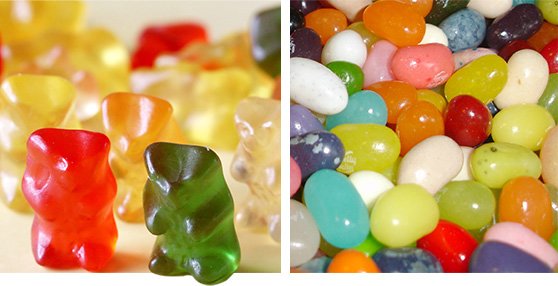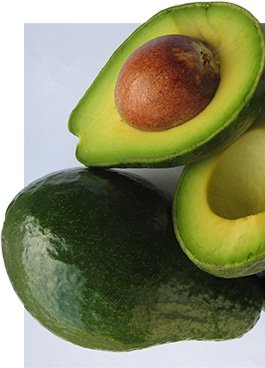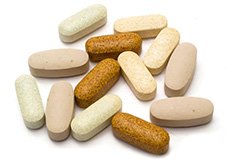In most cases, I'm a fan of specialization. I work hard to match the right supplements to the right athletes, create programs to help people meet certain goals, and dial in nutrition as precisely as possible. Anything less is less than optimal, and I don't settle for less than excellent.
But I also believe there are fundamental fitness truths that both a 70-year-old grandmother and a 25-year-old competitive bodybuilder can use. I've been preaching the 10 rules here in various forms for as long as I've been in the fitness business, and they still inform everything I do. They may not be news to some of you, but I'm confident that if you check this page a decade from now, they'll be just as valid as they are now.
Rule 1: Be Positive
It may sound like a cliche, but it is absolutely critical that you keep a positive mindset and don't let negative thoughts, from yourself or others, knock you off your path. More than any program, diet, or supplement, this separates the people who achieve their goals from the people who don't.
People constantly reach out to me on Facebook, Twitter, YouTube, and the various websites I write for in order to share their results. Plenty of these people have made amazing progress in a short period. Maybe they've gained 20 pounds of lean muscle on my programs in less than three months, or lost 20 pounds or more in two months. But often, I see other people commenting that it is simply impossible that these people achieved these results in that period of time.
This grinds my gears. Why would thousands of people lie about their results? They're not lying. They simply stayed positive and did the hard work to achieve results. Those people who see these results as impossible are negative thinkers and will likely never see such results. Let their negativity roll off your back—or better yet, don't let it onto your back in the first place. Stay positive, set no limits, and you won't believe what you are capable of.
Rule 2: Prioritize Protein
The easiest "trick" when it comes to dieting isn't a trick at all. It's a choice, and a simple one at that: Choose protein! Whether your goal is fat loss, more muscle, or both, focusing on protein at every meal—including snacks—will keep you on the mark. Make this macronutrient your highest priority. Plan everything else around it.
For breakfast, make sure you eat protein such as eggs, and don't worry about carbs like toast or cereal or even fruit. Sure, a piece of fruit when complemented with eggs or other protein source makes a great breakfast, but when you're rushed for time, don't just grab an apple and call it good. Hard-boil a few eggs, throw them in a baggie, and take them along. That is a breakfast.

Later in the day, if you don't have time for a meal, make a protein shake. It's the perfect substitute for a meal. And with more companies making protein RTDs (ready-to-drink products) that you can buy at gas stations, convenience stores, or stash in your desk, it's getting easier all the time to get protein on the go. This applies to snacks, too. If you're hungry, grab beef jerky, low-fat string cheese, or Greek yogurt before going for pretzels or even fruit.
When you go out to a restaurant and you're not sure what to choose, don't order the pasta. Ask for a steak, chicken, fish, or pork. Sure, you can't always control how it is prepared, but you can usually pick the side dishes. Ditch the rice or potatoes and order a side salad instead.
Rule 3: Change Is Good
When it comes to weight training, stop worrying about which exercise works the chest, abs, or the triceps "best." No one exercise is the best exercise for any muscle group. The best exercise is the one you aren't doing, so use a variety of exercises and change them frequently.
The same rule goes for rep ranges. People spend too much time worrying about the ideal rep range for muscle growth, building strength, or burning fat. The truth is that you must change your rep ranges frequently if you want to keep improving. This process of systematic change is referred to as periodization, and in numerous research studies it has proven to be more effective for muscle growth, strength gains, and even fat loss than any specific rep range.
You can see good examples of this in my programs Shortcut To Size and Shortcut To Shred. But you can also integrate it on your own. Just decrease the rep range and increase the weight every week over a four-week period. For example, in week 1 use 12-15 reps, in week 2 use 9-11 reps, in week 3 use 6-8 reps, and in week 4 use 3-5 reps. Then repeat that cycle with new exercises, or perform the same cycle in the reverse order, with rep ranges getting higher every week.

Rule 4: HIIT It!
When it comes to cardio, stop the long slog on the treadmill. Research confirms that high-intensity-interval training outperforms slow and steady cardio for fat loss, athletic performance, and cardiovascular health.
A good rule of thumb here is to use a 2:1 ratio of exercise to rest. You can do 30-second intervals of high-intensity exercise alternating with 15-second intervals of rest. Or do 1-minute intervals of exercise with 30-second intervals of rest.
Which exercises should you do? Any! If you want to run, then run, or cycle, swim, or jump rope. Do calisthenics exercises like burpees, jumping jacks, or mountain climbers. Or better yet, use weights and do movements like kettlebell swings, dumbbell cleans, or kettlebell snatches.
Rule 5: Recover With Sweets
There is a war on sugar at the moment. And there should be! People consume way too much of it in the form of soft drinks, processed foods, and coffee drinks. High-glycemic sugars like sucrose, corn syrup, and high-fructose corn syrup, and dextrose spike insulin levels and cause you to store more body fat and burn less fat, especially when you sit around on your glutes all day like most of us do.
But there is one time when consuming sugar is actually good for you and will not lead to fat gain. That time is immediately after exercise.

During exercise, you burn up glycogen, which is your body's storage form of carbs. And the main places you store glycogen are in the muscles and in the liver. These stores become depleted during exercise, and research shows that the best way to replenish them is by eating high-glycemic sugars. Think fat-free candies like gummy bears, Pixy Stix, or even jelly beans.
As an added bonus, allowing this treat after workouts can help you better stick to your diet the rest of the time, when you shouldn't have sweets. Aim for about 20-30 grams of fast-acting carbs from fat-free or low-fat sweets immediately after exercise, and take them along with your protein shake.

Rule 6: Favor Fat
Dietary fat is calorically dense. One gram of it contains 8-9 calories, as compared to the 4 calories in 1 gram of protein or carbs. This is why the 1970s and 80s witnessed a war on fat, and why most doctors and dietitians were recommending a very-low-fat diet.
Today, we know that a moderate amount of fat is not only crucial for health, but also better for fat loss and for muscle growth—especially for men. Eating a higher-fat diet, especially monounsaturated and saturated fat, keeps testosterone levels higher.
Your best bet for better health, fat loss, muscle mass, and strength gains is to consume about 20-30 percent of your total daily calories from fat, with 10 percent coming from saturated fat, 10 percent from monounsaturated fat, and 10 percent from polyunsaturated fat such as omega-3 fatty acids. If you want an even simpler formula, shoot for around 0.5 g of fat per pound of body weight daily. Also consider supplementing with 2-3 grams of essential fatty acids such as fish oil 2-3 times per day, focusing on omega 3s rather than a 3-6-9 supplement.
Rule 7: Stay Active
Exercise is fantastic. It's crucial. But especially if you have a job that requires you to sit for extended periods of time, it isn't enough.
Whether you walk your dog, play pick-up basketball, or just throw the ball around with your kid, do something active as often as possible. This includes days when you train, but it's especially important on the days that you take off from the gym.

Research shows that sedentary living actually shuts off genes involved in fat-burning. If you think one active hour out of every 24 is enough to change this, you're dreaming. Seek out enjoyable physical activity, and make room for it every day. And when you sit for long hours, such as at a desk at work or at home watching television, make sure to get up, stretch, or walk around every 30 minutes or so.
Rule 8: Supplement With Creatine
This tip isn't just for guys who want to build more muscle and strength. Creatine is a supplement that I believe everyone should take, just like fish oil.
The main way that creatine works is by providing energy to cells—and not just muscle cells. It is also critical for supplying energy to nerve cells. That's why research shows that it has the potential to help brain function and even prevent depression. It's also been shown to support heart health and protect the skin against sun damage. These are universal concerns, and given creatine's low price, ease of use, and proven effectiveness, the case for it is too strong to ignore.
Rule 9: Take A Multivitamin
Before you worry about protein powders or creatine, the first supplement that you should focus on is a simple multivitamin and mineral supplement.

Research shows that people who train intensely lose many critical vitamins and minerals, such as B vitamins, vitamin C, chromium, selenium, zinc, magnesium and copper. We sweat out these nutrients, but several of them also get used more quickly during workout, during recovery, and in the elevated protein synthesis that takes place after training. Being deficient in any vitamin or mineral has the potential to hamper your performance, fat loss, and muscle growth.
Many doctors and dieticians claim that a multi is not necessary, if you eat a perfect diet. But no one, even people with the best intentions, eats a perfect diet. A few misguided researchers take the next step and claim that multis can be dangerous, a concern I addressed recently.
Keep it simple. Choose a multi that has 100 percent DV of most of the vitamins and minerals. And for those that aren't up to 100 percent, take a separate supplement to make up the difference.
Rule 10: Cheat!
Just to be clear, eating healthy is the most important thing. Focusing on quality protein, vegetables, and healthy fats will help you feel better, look better, perform better, and live longer. But don't become that person who is so strict with their diet that they never take a moment to enjoy themselves. You deserve better!
I highly recommend allowing yourself one meal each week of anything—and I mean anything—you've been craving. Maybe it's pizza and beer. Maybe it's an Italian dinner with wine. Maybe it's your mom's homemade mac and cheese. And don't forget dessert! Craving donuts? Ice cream? Pie? Have it—just not all of it.
Pick one good meal and one dessert that you've been craving, and enjoy them for all they're worth. I find that when people have a scheduled cheat meal at the end of the week, they'll want to stick to their diet the rest of the time, so that they really feel like they deserve that cheat meal. And then once they have it, it's easier to go back to the diet for another week until the next cheat meal.
Know what else ends up being true? The food you crave tastes a lot better when you aren't eating it without limits any time you want. And just to be clear, this cheat meal will cause no damage to your diet, as long as you stick with healthy eating during the week. So drop the guilt and enjoy. You only live once!


